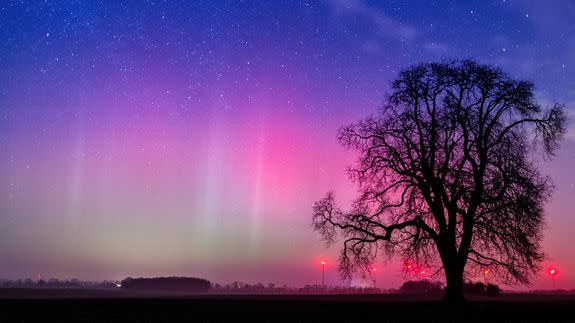You might still have time to catch amazing auroras around the globe

On Tuesday night, the northern lights put on quite a show for people as far south as Minnesota and Wisconsin, and tonight could bring even more aurora action.
Earth's magnetic field is currently being pelted with particles streaming from the sun, sparking a geomagnetic storm that is increasing aurora activity in the high latitudes of the southern and northern hemispheres.
SEE ALSO: The northern lights might put on a serious show tonight
The National Oceanic and Atmospheric Administration's Space Weather Prediction Center is forecasting that a "moderate" geomagnetic storm will continue through Wednesday, possibly bringing the cosmic light show as far south as New York and Idaho.
Tuesday night's show may not have been one for the history books, but it didn't disappoint for many people in high latitudes with a clear view of the sky.
Photographers around the world posted their views of the northern and southern lights on Instagram.
A photo posted by Jason Charles Hill (@jasoncharleshill) on Oct 26, 2016 at 4:04am PDT
A photo posted by Tino Grzunov (@tino_2symmetry) on Oct 26, 2016 at 10:58am PDT
The northern and southern lights are created when charged particles shot out by the sun slam into Earth's magnetic field and are drawn down toward the poles.
During intense solar storms, some of those particles make it through the planet's magnetic field. They slam into neutral particles of oxygen, nitrogen and other elements in Earth's upper atmosphere, causing them to glow in different colors depending on the element being excited.
If you want to photograph the auroras, get to a dark part of the world, far from artificial light and without many clouds in the sky.
According to a blog post from PetaPixel, you should use a wide-angle lens, a tripod and some kind of shutter-release mechanism to take some relatively long exposure photos of the cosmic lights.
